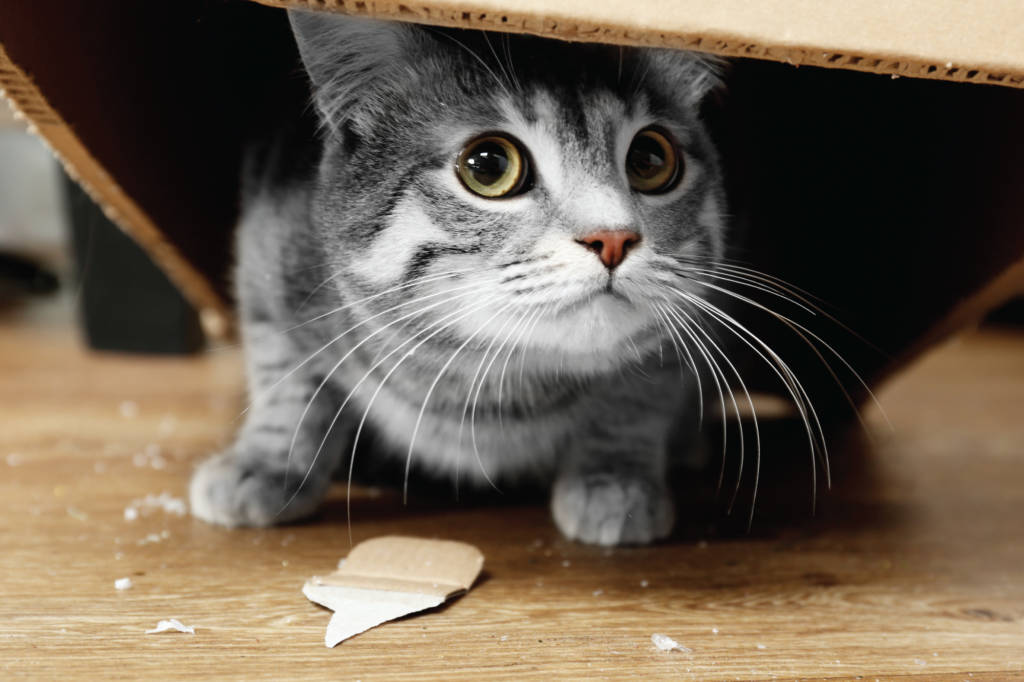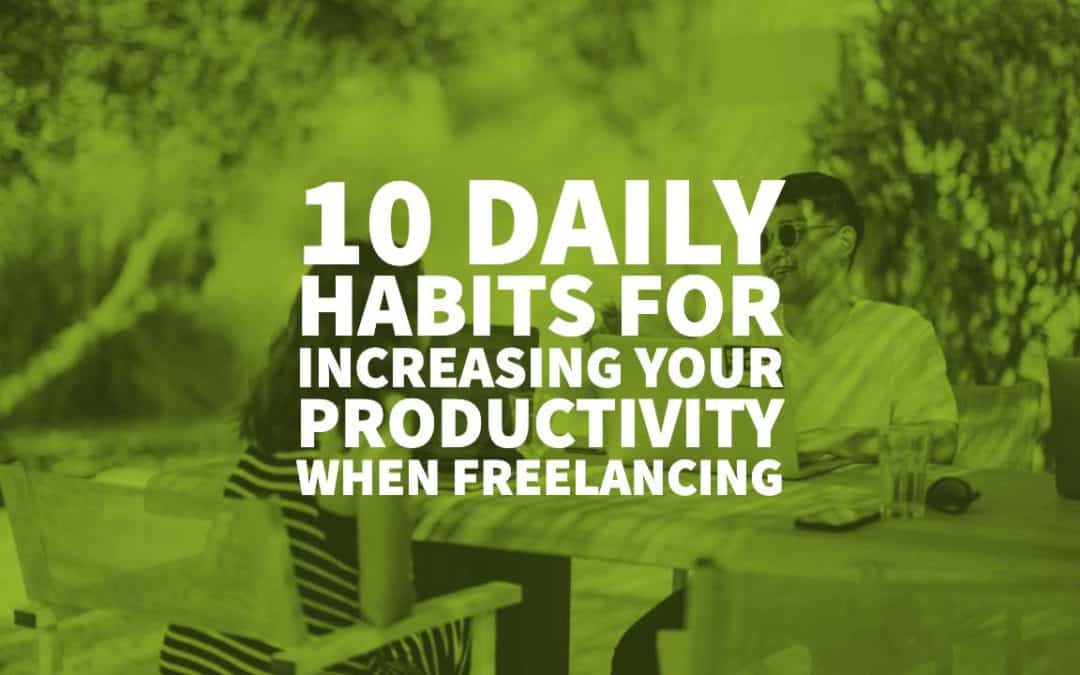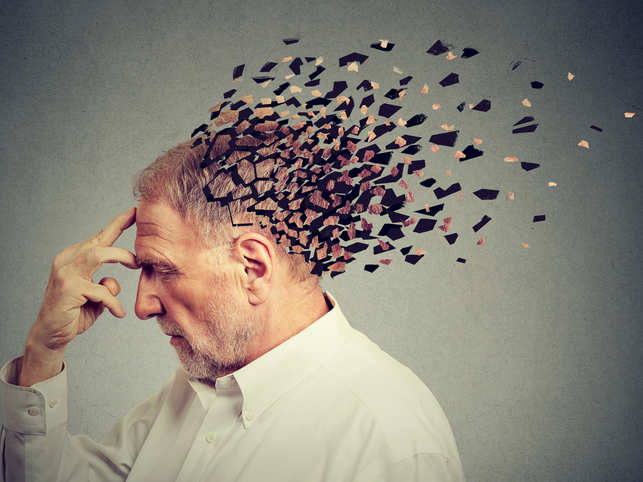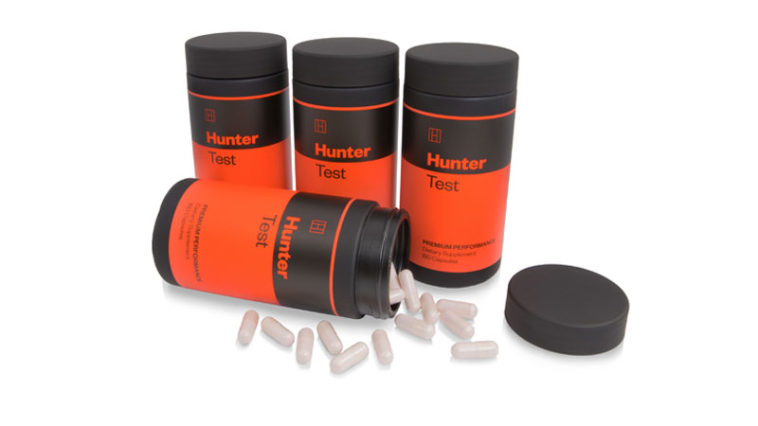Nature Knows and Psionic Success
God provides
Want to live longer? Ignore your phone

If you’re like many people, you may have decided that you want to spend less time staring at your phone. It’s a good idea: An increasing body of evidence suggests that the time we spend on our smartphones is interfering with our sleep, self-esteem, relationships, memory, attention spans, creativity, productivity and problem-solving and decision-making skills. But there is another reason for us to rethink our relationships with our devices. By chronically raising levels of cortisol, the body’s main stress hormone, our phones may be threatening our health and shortening our lives. Until now, most discussions of phones’ biochemical effects have focused on dopamine, a brain chemical that helps us form habits — and addictions. Like slot machines, smartphones and apps are explicitly designed to trigger dopamine’s release, with the goal of making our devices difficult to put down. This manipulation of our dopamine systems is why many experts believe that we are developing behavioral addictions to our phones. But our phones’ effects on cortisol are potentially even more alarming. Cortisol is our primary fight-or-flight hormone. Its release triggers physiological changes, such as spikes in blood pressure, heart rate and blood sugar, that help us react to and survive acute physical threats. These effects can be lifesaving if you are actually in physical danger — like, say, you’re being charged by a bull. But our bodies also release cortisol in response to emotional stressors where an increased heart rate isn’t going to do much good, such as checking your phone to find an angry email from your boss. 4 HOURS A DAY If they happened only occasionally, phone-induced cortisol spikes might not matter. But the average American spends four hours a day staring at their smartphone and keeps it within arm’s reach nearly all the time, according to a tracking […]
Gut microbiota linked to mood and mental health

( Natural News ) In this review, researchers from York University in Canada systematically evaluated current literature on the impact of probiotic supplementation on anxiety and depression symptoms in humans. They used multiple databases to search for relevant trials and evaluate them. Their results were published in the journal Nutrition Research . Gastrointestinal (GI) microbiota – microbial communities that live in the gastrointestinal tract – play an important role in digestive, metabolic, and immune functions. Preclinical studies on rodents have linked behavioral and neurochemical changes in the central nervous system to changes and imbalance in these bacterial communities. Probiotic supplementation in rodents markedly changes their behavior; these changes correlate with changes in their central neurochemistry. Despite these studies, the significance of the behavioral effects of probiotic supplementation in humans, especially on anxiety and depression symptoms, is relatively unknown. To address this, researchers searched for randomized controlled trials published between January 1990 and January 2016 using Medline, PsycINFO, PubMed, Scopus, and Web of Science. They found a total of 10 randomized controlled trials – four in clinically diagnosed and six in non-clinical samples – that provided limited support for the use of some probiotics in reducing human anxiety and depression. Despite methodological limitations and the complex nature of gut-brain interactions, the results of those trials suggest that probiotic supplementation offers psychological benefits to humans. The researchers concluded that a better understanding of developmental, modulatory, and metagenomic influences on GI microbiota, particularly in relation to mood and mental health , should be the focus of future research in this area. Journal Reference: Pirbaglou M, Katz J, Souza RJD, Stearns JC, Motamed M, Ritvo P. PROBIOTIC SUPPLEMENTATION CAN POSITIVELY AFFECT ANXIETY AND DEPRESSIVE SYMPTOMS: A SYSTEMATIC REVIEW OF RANDOMIZED CONTROLLED TRIALS. Nutrition Research. September 2016;36(9):889–898. DOI: 10.1016/j.nutres.2016.06.009
The fountain of youth? Injecting the BLOOD of young mice into older animals improved memory and learning ability, study finds

Scientists have identified two ingredients in the blood of the young that reverse the ageing process, a study suggests. When blood is taken from young mice and injected into old mice it ‘reversed’ any declines in their brains, the study found. The proteins cause more brain cells to grow, increased the nerve connections between brain cells. The proteins were tested on human brain cells in the lab and found to have a similar effect, helping the cells to grow and increase the number of connections. The findings raise hopes that a potential treatment that can act as a ‘fountain of youth’ and by reversing the effects of dementia. Scroll down for video Young mouse (15-day-old; left) and aged mouse (15-month-old; right) mice used in the experiments. When blood is taken from young mice and injected into old mice it ‘reversed’ any declines in their brains Young mouse (15-day-old; left) and aged mouse (15-month-old; right) mice used in the experiments. When blood is taken from young mice and injected into old mice it ‘reversed’ any declines in their brains The two key proteins that have the rejuvenating effect are thrombospondin-4 THBS4 and SPARC-like protein 1 (SPARCL1). Writing in the journal PNAS , the scientists from Stanford write that the compounds increase the number of synapses – connections between brain cells. In a healthy brain the creation of new synapses balances the loss of old ones, but this process slows as we age, and becomes accelerated in Alzheimer’s disease. Loss of synapses makes it harder to remember things. The authors Kathyln Gan and Thomas Sudhof write: ‘We asked whether young blood is enriched in factors that act directly on neurons to promote synapse formation. ‘We show that serum from young but not old mice indeed directly boosts synapse formation in cultured […]
As plaque deposits increase in the aging brain, money management falters
Aging adults often show signs of slowing when it comes to managing their finances, such as calculating their change when paying cash or balancing an account ledger. These changes happen even in adults who are cognitively healthy. But trouble managing money can also be a harbinger of dementia and, according to new Duke research in The Journal of Prevention of Alzheimer’s Disease , could be correlated to the amount of protein deposits built up in the brain. "There has been a misperception that financial difficulty may occur only in the late stages of dementia, but this can happen early and the changes can be subtle," said P. Murali Doraiswamy, MBBS, a professor of psychiatry and geriatrics at Duke and senior author of the paper. "The more we can understand adults’ financial decision-making capacity and how that may change with aging, the better we can inform society about those issues." The findings are based on 243 adults ages 55 to 90 participating in a longitudinal study called the Alzheimer’s Disease Neuroimaging Initiative, which included tests of financial skills and brain scans to reveal protein buildup of beta-amyloid plaques. The study included cognitively healthy adults, adults with mild memory impairment (sometimes an Alzheimer’s precursor) and adults with an Alzheimer’s diagnosis. Testing revealed that specific financial skills declined with age and at the earliest stages of mild memory impairment. The decline was similar in men and women. After controlling for a person’s education and other demographics, the scientists found the more extensive the amyloid plaques were, the worse that person’s ability to understand and apply basic financial concepts or completing tasks such as calculating an account balance. "Older adults hold a disproportionate share of wealth in most countries and an estimated $18 trillion in the U.S. alone," Doraiswamy said. "Little is known […]
Does Your Memory Suck? Here Are 4 Natural Ways To Boost Your Brain Power

iStockphoto The brain is the most critical organ in the body. Sure, the heart and liver are crucial, but those can be transplanted or hooked up to technology, so they keep working. You only get one brain, and unless you’re the son of a Frankenstein you’re not getting another, so it’s vital to keep the mind in mint condition. Unfortunately, many daily habits are turning our minds into mush. Staring at screens all day is slowly screwing with our melons, and there are hundreds of times a day when we’ve got to trick our heads into getting stuff done. Thankfully, there are natural ways to boost brain power, and this article from BrainMD Health suggests several ideas to try immediately. A few of the tips should be obvious like eating the right foods, avoiding toxins like booze and drugs, and exercising on the regular. There are all activities we’ll assume people know and understand because they’re smart for staying healthy overall. The other four suggestions from BrainMD Health are a little less obvious but just as easy to incorporate into your daily routine. The first proposal is to TAKE MORE TRIPS . “Traveling helps the brain by exposing it to new places and faces,” the article explains. “Using maps exercises the brain’s visual-spatial abilities and helps stimulate your memory pathways. In addition to breaking up the sameness of your daily routine, taking a trip can provide a whole new set of experiences, some of which may become cherished memories.” Next, LEARN SOMETHING NEW. When was the last time you learned a new sport, new game, taught yourself to play an instrument or accomplished anything after work besides crushing “Rick and Morty” reruns? “Studies indicate that stimulating brain pathways you haven’t been using regularly can help improve your brain health. […]
Prescription-free solutions to help reduce anxiety in pets

Print full article Anxiety is pervasive in our 24-7 society, and dealing with its consequences can be a frequent source of frustration. It’s not just us—our pets also are affected by stress and anxiousness. Both clinicians and pet owners are actively seeking prescription-free solutions to help minimize inappropriate behavior, phobias, fear, and anxiety that impact their pets. Fear and anxiety can manifest in many ways. Dogs may demonstrate excessive vocalization, destructive behavior, hiding, shaking, or drooling. Cats may hide, act aggressively, and urinate or defecate inappropriately. Cats’ bladders appear to be the target organ for stress, which means relieving stress may have physical as well as behavioral benefits. The increased demand for prescription-free supplements is apparent in the Fear Free movement. Veterinary medicine is actively working toward making veterinary visits easier by giving pets and their owners a more relaxed and positive experience. Clients get stressed when their pets behave poorly and may fear being judged as a bad pet parent. Now, we have more opportunities to provide guidance and recommend prescription-free supplements that help reduce anxiety in pets. Supplements also may be key to implementing training and behavior modification therapy by facilitating a calm and receptive attitude. Increasingly, veterinarians are counseling their clients about using supplements to help with their pets’ training and behavioral issues. Since behavior is usually relegated to a lower priority than physical illness, it’s critical for veterinary professionals to discuss behavioral issues with their clients. According to a recent study, 90 percent of pet owners are looking to us for help with their pet’s behavioral issues. 1 Fear and anxiety disorders affect an estimated 23 million dogs in the U.S. alone. 2 Another study noted 37 percent of dogs are surrendered in the first three months of ownership due to behavioral issues. Behavioral issues […]
3 Ways to Calm a Friend Who Got Too High

It’ll happen. You probably know from experience. People do get too high on cannabis. It might be a first-time user, or someone trying a potent strain they haven’t tried before. Others get too high from smoking too much too soon. The side effects of red-eye and dry mouth will likely be too strong. But it’s the behavior while high that presents the real concern. It’s not likely to kill you unless you opt to drive under the influence. But it can cause problems. It might knock you out, or it can loosen up your inhibitions enough to prompt embarrassing social behaviors. Another real concern are extreme psychoactive experiences. Some strains can trigger paranoia and hallucinations in some users. Most effects will disappear within hours, but the experience can still be frightening enough to seek medical treatment. The potential for getting too high is enough reason to use cannabis with others regardless of how you consume it. In smoking circles, for instance, everyone should know what is being passed around and what each member’s experience has been. Among edible users, you should let others know what you are using and let them coach and monitor your usage. 3 ways to help if a friend gets too high: 1. Paranoia follows us of many cannabis strains. It also happens in some people more than others. And, some misguided users seek paranoiac experiences. For others, paranoia will discourage future use, probably good for those pre-disposed to paranoiac effects like those already suffering from anxiety and depression. Paranoia creates a sense of persecution, heightened anxiety, and fear pushing beyond reason. It triggers perceived threats. Paranoiac users think they are surrounded by conspirators, taking even common remarks or situations as personal threats. Such perceptions can become fixed beyond the common effects of a cannabis […]
Summer Beauty Essentials

Summer is finally here, so I’ve rounded up a handful of my favorite beauty finds! The babes over at Revolve sent a bunch of their top beauty picks and I did what any normal girl would do, I opened everything up and gave myself an at home spa day to try everything! They sent over some must-have summer beauty essentials to keep my complexion soft and glowy. Plus, a some low-maintenance makeup products so I can spend less time in getting ready and more of my day lounging by the pool or beach. Must Have Summer Beauty Finds Luxe Tanning Drops Officially my new favorite product for spring, summer, fall & winter! Tan Luxe self tanning drops are a major game changer. They’re a tailor-made approach to self tanning, in tandem with your daily body moisturizer to develop a natural, golden glow with minimum effort. These concentrated serums are packed with skin boosting, certified organic ingredients derived from Raspberry Seed Oil, Vitamin E, and Aloe Vera for hydrating benefits and Cellutone Complex to help firm the surface of skin and reduce the appearance of cellulite. Instead of using a tanning foam or lotion, you can control the amount of tanning drops you add to your own lotion, meaning you end up with a more natural, gradual tan. It also makes it a lot easier to get a consistent tan, without gross lines or uneven spots. I also like that because you’re combining drops with your own lotion, you don’t end up smelling like gross tanning lotion. They make both face & body drops. For the face drops, I mix 1-4 drops into my moisturizer, serum or face oil and apply evenly (morning or night). For the body drops, I mix 2-6 drops with my body moisturizer and apply it […]
10 Heath Benefits Of Acai Berries That Will Make You Want Acai In Everything

In our quest for healthier eats, Acai bowls are a favourite go-to snack post-workouts and post-meals. Sure we all know that acai berries are the superfood of all time, but you can’t help but wonder just what is it that makes the acai berry so special. No need to be intimidated by this small fruit, here we list 10 health benefits of acai berries that will make you want acai in everything . Just what are Acai berries? They’re a small tiny fruit resembling that of grapes, harvested from South America’s Acai Palm Trees. The taste of the berry can be described as an interesting blend of chocolate and blackberries—a little bit acidic, most parts refreshing and every part delicious. IMPROVES COGNITIVE ABILITY Regular intakes of acai berries has been shown to improve cognitive function. Not only does it enhance and improve memory, it also improves overall brain health. This is thanks to numerous antioxidants present in the berry that helps to improve blood flow to the brain, while also lowering stress and inflammation. Though more research is required, studies suggest that antioxidant-rich diets may lower the risk of neurological diseases such as Alzheimer’s and Parkinson’s. BOOSTS IMMUNE SYSTEM Consumption of acai berries boosts the production of fundamental cells that make up our immune systems, such as certain types of white blood cells and delta T cells. Combined with its high concentration of vitamin c, it makes for the perfect smoothie to have to ward off the flu. IMPROVES HEART HEALTH One particular antioxidant present in acai berries is known as anthocyanin, regular consumption of which reduces the risk of heart attacks especially in young and middle-aged women. On top of that, it helps to balance cholesterol levels by boosting production of “good” cholesterol and reducing production of “bad” […]
7 signs you need a mental health day off work — and how to ask for one

Although the reasons may vary (a sudden break-up, a stronger-than-average feeling of anxiety, a stress-filled week, etc.) the feeling is universal: the need to stay home from work to get some rest and regroup. Yet while you’ve likely experienced plenty of signs you need a mental health day before, it can be difficult to know what to say to your boss when you want to take time off for this reason — is it OK to just be honest? Yes, according to Andrea Goeglein, a psychologist and founder of ServingSuccess . “Your mental health is your responsibility, and no one else’s — not your boss’, not your partner’s, not your children’s,” she tells Mic. “You need to care enough about yourself to ask for what you need and can’t expect others to read your mind.” Mental health days can be crucial not only to help you re-energize, but to help ward off workplace burnout — an issue so common that the World Health Organization (WHO) recently announced that it’ll be included in its upcoming handbook of conditions and diseases. “Mental health days are really driven by the degree to which our functioning at work is diminished,” Joshua Klapow, Ph.D., clinical psychologist and host of The Kurre and Klapow Show , tells Mic. “This is caused by the presence of psychological, emotional, behavioral, and/or physiological symptoms, from stress to anxiety to anger to distress.” While some people might feel guilty taking mental health days because they believe they’re only meant for those actually suffering from mental illness, getting that time off can help restore the wellbeing of anyone, regardless of if they have clinically diagnosed disorders. Here, Klapow and other experts weigh in on clues that you may need to take a day off, as well as how to go […]
10 Daily Habits for Increasing Your Productivity When Freelancing

10 Daily Habits for Increasing Your Productivity When Freelancing When it comes to productivity, there is no ‘on and off’ switch. However, there’s practice and a little guidance from us that will help you control it better when doing freelance work . Most freelancers occupy themselves with various activities throughout the day. As a one-person army, they not only need to attend to their primary job but also do peripheral things such as negotiating, finding new clients , etc. All of this can be overwhelming for one person and requires a high level of focus. To successfully tackle this in a timely and efficient manner, there has to be some kind of order going on. However, however hard it may seem to enter into work mode, there are a few steps that can help you keep moving forward. It may sound contradictory, but we need a routine to follow to enter the creative flow. First of all, you need to establish a morning routine. Next on the agenda is following your daily schedule. Make sure that you work smart and take brakes. Don’t forget about your health and time for relaxation. As these were only a few general points, we’ll now go into more detail about ten things you should do every day to increase your productivity when freelancing. 1 – Get a good night’s sleep To start your day fresh and energised, a rested mind is needed. Sleep improves your concentration and cognition, which, in return, helps with your performance at work. 7 to 8 hours of sleep is required for the brain to rest and improve your problem-solving skills and memory, which will help you get more work done in less time. Go to bed at a reasonable hour and get up when you hear the first […]
This common nutrient may protect your brain, preventing dementia

Recently, researchers from Arizona State University have found an important nutrient called choline may help fight Alzheimer’s disease, the most common type of dementia. The nutrient may be a better way to prevent Alzheimer’s because it is considered a very safe option compared with many other drugs. Alzheimer’s disease is a chronic brain disease that usually starts slowly and gradually worsens over time. Patients often experience a range of symptoms, such as memory loss, confusion, delusions, aggression, and loss of motor control. Research has shown that the disease can affect 13.5 million people in the U.S. alone by mid-century. Alzheimer’s disease can begin its path in the brain decades before the detectable clinical symptoms. It is very important to find a way to prevent the disease in its early stages and slow down its progress. In the study, the team examined the effects of choline. It is an essential nutrient naturally found in some foods and available as a dietary supplement. Choline is used by the body to produce acetylcholine, which is an important neurotransmitter essential for brain functions including memory, muscle control, and mood. In the current study, the team found that when mice with Alzheimer’s symptoms eat high amounts choline in their diet, they show improvements in spatial memory, compared with those receiving a normal choline regimen in the womb. Moreover, the effects of choline not only protect mice receiving the choline supplementation but also protect the subsequent offspring of these mice. The team explains that choline may act to protect the brain from Alzheimer’s disease in at least two ways. First, it can reduce an amino acid that acts as a potent neurotoxin contributing to amyloid plaques, which are main signs of Alzheimer’s in the brain. Second, choline reduces the activation of microglia, which are cells […]
New Alzheimer’s Campaign Encourages Families to Discuss Cognitive Problems Sooner, Enabling Early Diagnosis

CHICAGO, June 3, 2019 /PRNewswire/ — It’s a conversation no family wants to have – talking to a loved one about memory loss or cognitive decline. Close family members are typically the first to notice memory issues or cognitive problems, but they are often hesitant to say something – even when they know something is wrong. A new survey released today by the Alzheimer’s Association reveals that nearly 9 in 10 Americans say they would want others to tell them if they were showing signs of memory loss, thinking problems or other symptoms of cognitive decline. However, nearly 3 in 4 Americans say that talking to a close family member about memory loss, thinking problems, or other signs of cognitive problems would be challenging for them. Cynthia, a retired nurse, first started noticing changes in her inability to complete daily household tasks and remembering everyday information, including finding herself at a stop sign while driving with no recollection of how she got there. Julie, a once voracious reader, found herself unable to finish a book, having to go back and reread pages because she couldn’t remember what she had just read. Theresa, a retired social worker and community volunteer, was urged to see a doctor when her daughter Shon noticed her mother was no longer keeping her house organized and tidy. Mario, a painter for over 30 years, noticed he was having problems completing typical tasks at work, forgetting directions and painting the wrong areas. Mario, a painter for over 30 years, noticed he was having problems completing typical tasks at work, forgetting directions and painting the wrong areas. Tom, a former college professor, began to experience challenges preparing and delivering coursework to his students and began to see his student evaluations suffer. He is pictured with his husband […]
How Sleep Deprivation Slowly Kills Us

According to various researchers, including a Research And Development report from 2016, Americans don’t get enough sleep. And, if you take a look at the scientific literature, getting enough sleep matters in all sorts of ways. Since we live in a capitalist paradise, or at least that’s what they tell us, everything is about the bottom line. See, it’s the economy, stupid, to quote a Reagan- era word of wisdom. Economy uber alles, right? So, according to researchers, insufficient sleep results in over 1.2 million lost working days every year, which translated in “real money” gives us an impressive figure: over $400 billion dollars lost every year. Who loses that money you asked? The US economy, obviously: the “man”, the corporations, employers, or the “1 percent” to quote Bernie-bros. So, yeah, sleep matters, even if we’re talking about the wrong reasons. Find out the secrets that helped our fathers survive in the old days! Now, to quote a well-known sleep advocate, who is also a member of the “1 percent”, Arianna Huffington respectively, “Sleep is the underpinning of our entire well-being, necessary for us to fully recharge and be productive, creative and truly connect with ourselves and others during the day,” Nicer words have never been spoken. But what is she talking about? The same RAND report I mentioned in the first paragraph explains that American workers’ chronic sleep deprivation doesn’t only affect economics. Getting less than 6 hours of sleep every night will increase your chances of early death with 13 percent, compared to those who get 7 or more hours of sleep. Basically, not sleeping enough equals increased chances of premature death. But wait, there’s more grim news on the horizon: as per a Gallup poll , almost 40 percent of Americans fail to meet the 7-or-more […]
UO research helps kids get their lives back after a concussion

Sometimes it’s a teen who got injured playing sports. Other times it’s a student who banged his head in a seemingly innocuous fall or maybe was in a car crash. Whatever the cause, the concussion cases that come in front of the Eugene Youth Concussion Management Team represent youths who are not able to completely return to school and their activities. While most youths fully recover from their injury, some have a complicated trajectory and require additional supports. The six-member team brings together University of Oregon faculty members and local private practitioners – each with their own specific area of expertise – to collaborate on complex cases. Together, they identify the barriers to recovery and develop a plan to manage the symptoms in order to get injured youths back in the classroom. Three years ago, the UO’s McKay Sohlberg , director of the Brain Injury and Concussion Clinic within the College of Education , was approached by Ryann Watson-Stites, a pediatric neuropsychologist at the Slocum Center for Orthopedics & Sports Medicine and an adjunct faculty member in human development, with an idea to launch a regional concussion team. That was in response to a growing recognition within the medical community that multiple disciplines are needed to help treat the most complex traumatic brain injuries. The concussion management team was a natural outgrowth of the research Sohlberg was doing with the Brain Injury and Concussion Clinic. Sohlberg works with youths who have difficulties with attention, memory or organization. “Managing the lingering effects from a concussion requires a multi-faceted, integrated approach that addresses a range of symptoms and conditions such as anxiety, sleep disruption and headaches,” Sohlberg said. “Coordination between all school and clinical providers as well as the students and their parents is key. When we have communication, care is […]
It’s all related: People who are healthy in their 30s more likely to be fit later in life

Cognitive decline is the medical term for a decline in your abilities to think, remember, and make decisions. WASHINGTON D.C [USA]: Researchers have identified factors associated with brain health in middle age in order to develop ways to preserve brain function when people are older. According to the findings, people’s health in middle age predicts how healthy you’ll be later in life. Cognitive decline is the medical term for a decline in your abilities to think, remember, and make decisions. Researchers know now that cognitive decline may begin in midlife and can develop over a period of 20 years or so. In a new study, published in the Journal of the American Geriatrics Society(JAGS), researchers identified factors associated with brain health in middle age in order to identify ways to preserve brain function when people are older. Several studies have shown links between changes in the senses and the development of cognitive decline. In earlier studies, the research team responsible for the new JAGS report found that problems with hearing , vision , or the sense of smell were associated with poorer cognitive function in middle-aged adults. These changes also have been linked to developing cognitive impairments for older people. The findings were published in the Journal of the American Geriatrics Society . People who smoke, have larger waists, or have health issues related to inflammation or cardiovascular disease in middle-age were more likely to show signs of brain ageing. To learn more in this new work, the researchers used information from the ongoing Beaver Dam Offspring Study (BOSS; conducted from 2005 to the present), a study of the adult children of participants in the Epidemiology of Hearing Loss Study, a population-based study of ageing. Hearing, vision, and the ability to smell were measured with highly sensitive tests. The […]
Forgotten memory can now be retrieved

Researchers find a way to retrieve forgotten memory. Left rostrolateral prefrontal cortex is important for high-level thoughts, including monitoring and integrating information processed in other areas of the brain. (Photo: Representational/Pixabay) Washington: While the brain is a complex organ to understand, a new study highlights a certain region in the brain which has a key role in recalling memory. The research, published in the Journal of Cognitive Neuroscience, suggested that using electrical current to stimulate that region ‘left rostrolateral prefrontal cortex’, improves people’s ability to retrieve memories. "We found dramatically improved memory performance when we increased the excitability of this region," said Jesse Rissman, senior author of the study. Left rostrolateral prefrontal cortex is important for high-level thoughts, including monitoring and integrating information processed in other areas of the brain. This is located behind the left side of the forehead, between the eyebrow and the hairline. The psychologists conducted experiments with three groups of people whose average age was 20. Each group had 13 women and 11 men. Participants were shown a series of 80 words on a computer screen. For each word, participants were instructed to either imagine themselves or another person interacting with the word (Example, the combination of "gold" and "other" might prompt them to imagine a friend with a gold necklace.) The following day, the participants returned to the laboratory for three tests- a memory, reasoning ability, and visual perceptions test. Each participant wore a device that sent a weak electrical current through an electrode on the scalp to decrease or increase the excitability of neurons in the left rostrolateral prefrontal cortex. Increasing their excitability makes neurons more likely to fire, which enhances the connections between neurons. For the first half of the hour-long study, all participants received "sham" stimulation, meaning that the device was […]
How to Train Athletes Who Are Blind

May 2004. I woke up in total darkness. I soon found out that two months earlier, I’d been involved in a horrible auto accident. After losing control of my car, a tree had broken through the windshield and impaled me in the face. My jaw was wired shut, an infection on my brain was killing me, another infection was attacking my sinus cavity, and my brain had been swollen for so long that my optic nerve atrophied. The doctors told me I’d never see again. I wish I could say I popped up in that bed and said, “No problem! We’ll make it through this.” But that didn’t happen. I had a long, long recovery process. Worst of all, four brain surgeries later—with cyclical and ridiculous amounts of at-home IVs, plus prescription bottles that needed to be kept in a large shoebox—the surgeons still hadn’t saved my life. The brain infection was still killing me. When I woke up in the ICU after that fourth brain surgery, the incredibly emotionally intelligent brain surgeon asked me if I wanted to die. Image 1. I’d been in a horrible car accident, where a tree broke through the windshield and impaled me in the face. The swelling in my brain eventually caused my optic nerves to atrophy, resulting in blindness. That didn’t rattle me as much as it might most people. I didn’t know how I was going to survive in that moment, and I don’t think the surgeon truly did either. It was a pathetic attempt at patient compliance. But, moments earlier, I’d made a choice. And sometimes I need to remind myself about that choice and the unifying strength in all of us. If I’m going to die, it’s not going to be in pain. I’m going to live my […]
“Magical” lifestyle changes that help eliminate depression (hint: none of them involve drugs)

( Natural News ) Instead of grabbing the nearest bottle of antidepressant or alcohol, people crippled by anxiety and depression should consider lifestyle changes based on older, simpler, and wiser times. By making life simpler and more meaningful , a person could improve his or her mental health far better than resorting to pharmaceutical drugs. Mental disabilities and disorders affect around 450 million people around the world. Depression, in particular, is expected to become the leading financial burden on a global scale. “Americans are 10 times more likely to have depressive illness than they were 60 years ago,” warned University of Kansas researcher Dr. Steven Ilardi. “And a recent study found the rate of depression has more than doubled in just the past decade.” Ilardi believed that the higher rates of depression stem from modern, industrial, and urban lifestyles. The comforts and luxuries of a high-tech society force people to work more hours, sleep for shorter periods, and stress out over things that they wanted but didn’t need. He also noted the increasing isolation of individuals who are too busy to maintain social connections. As a result, traditional communities break apart. “We feel perpetually stressed,” he explained. “And the more we learn about depression neurologically, the more we learn that it represents the brain’s runaway stress response.” (Related: That’s pretty dumb: Is your smart phone ruining your relationships? ) The Therapeutic Lifestyle Change Project Ilardi investigated low-tech societies like the American Amish and the Kaluli natives of Papua New Guinea. He found that depression is virtually unknown among those people. After studying the similarities between these depression-free societies, Ilardi identified six variables found in all of the groups. He used these variables to develop what he called the Therapeutic Lifestyle Change Project . The power of the elements : […]

